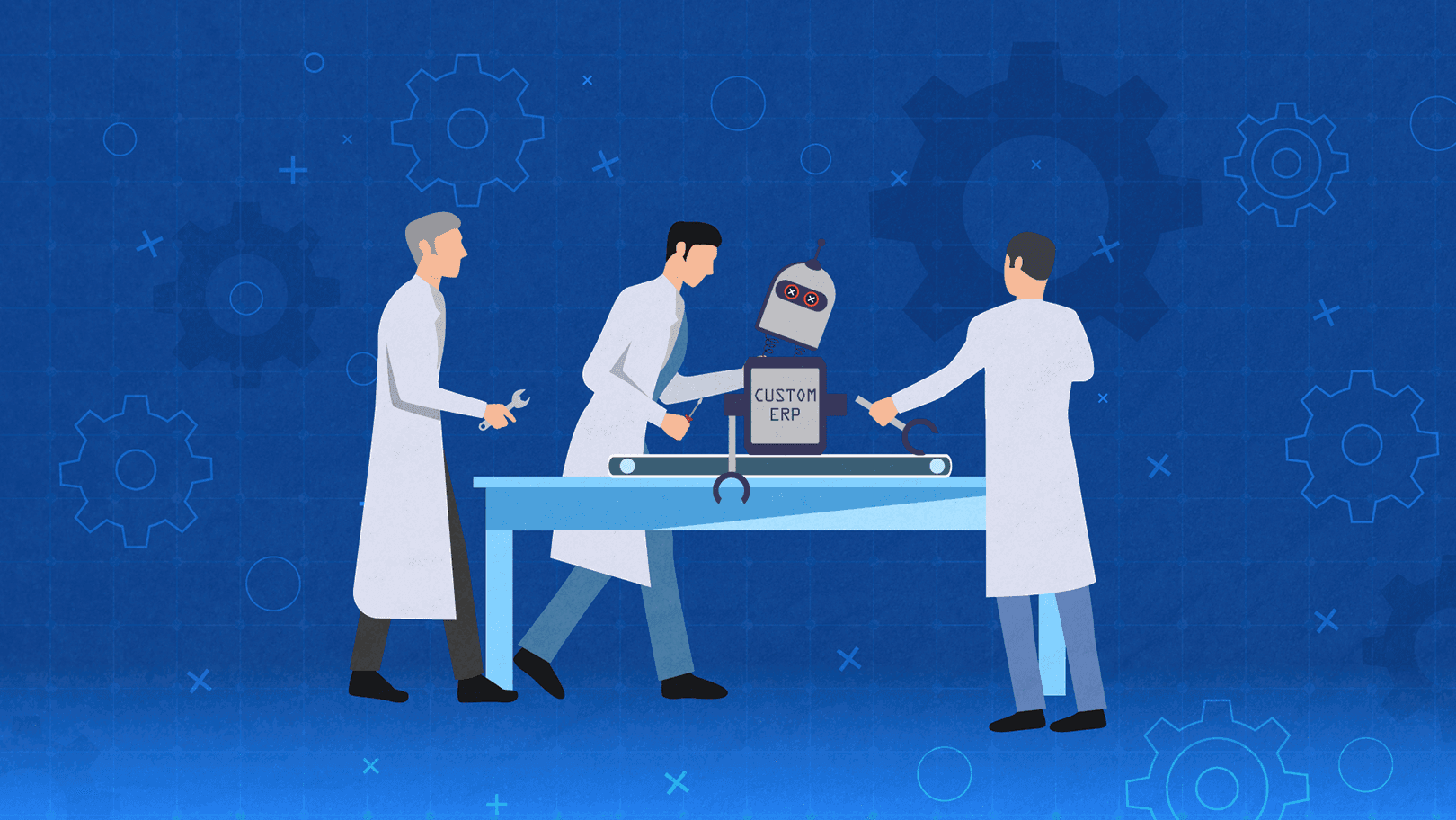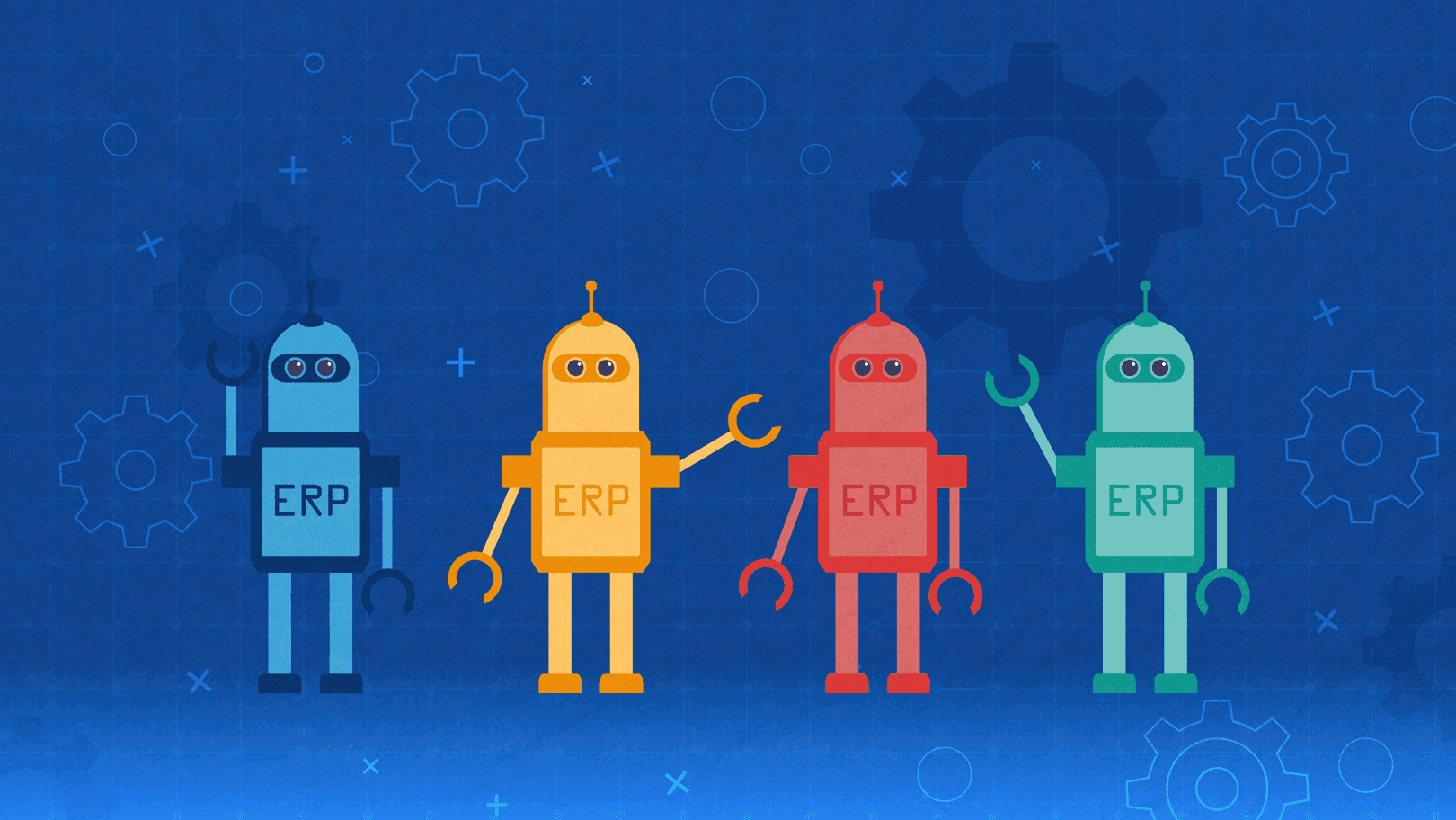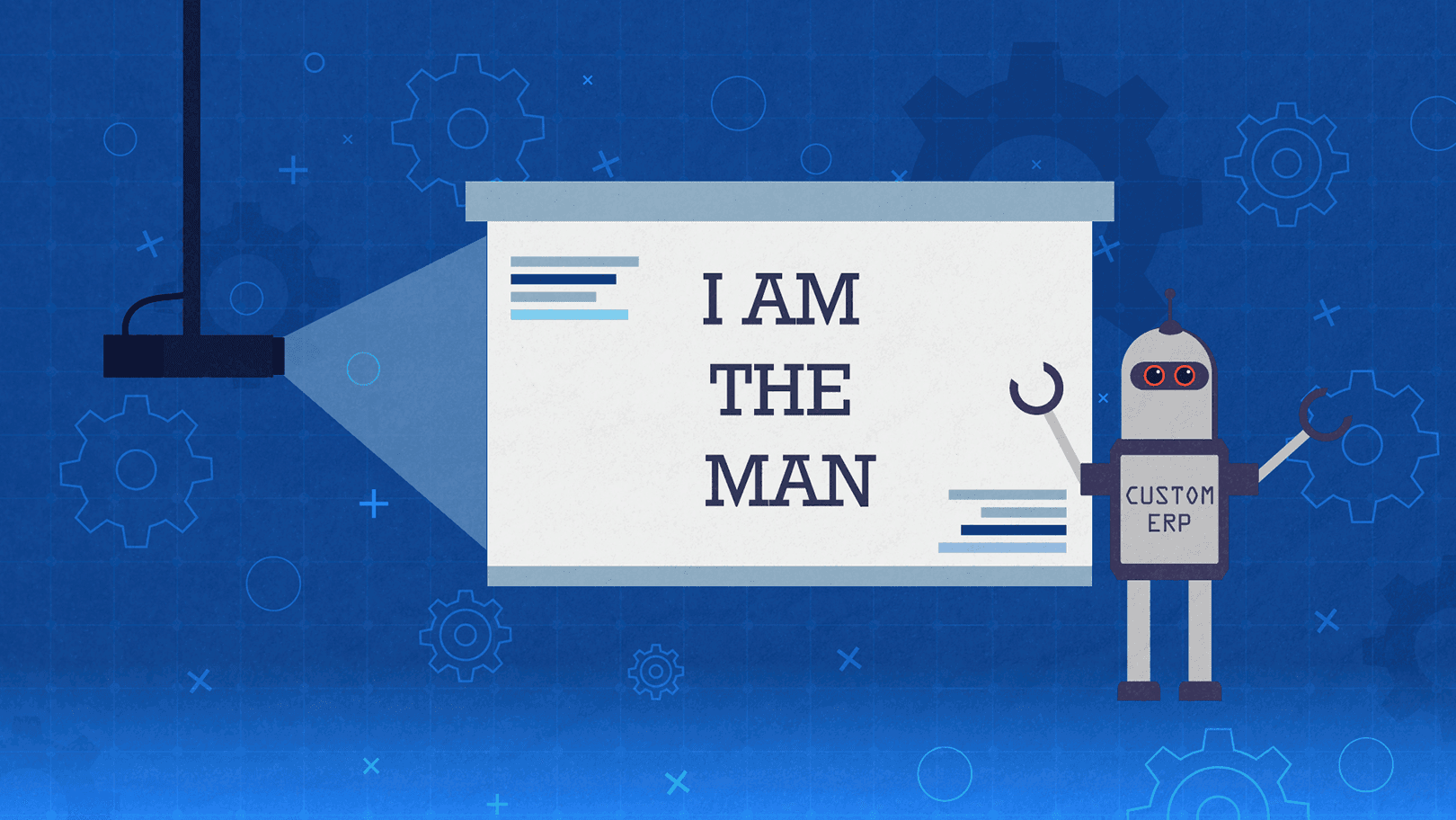Does Your Company Really Need Custom ERP Software?

The enterprise resource planning software, a.k.a. ERP is a term used to describe a system that integrates various applications with a goal of automating different company departments and operations into a single database.
The flow of data which the ERP enables helps organizations increase productivity, eliminate data duplication, and provide an additional layer of data integrity within the company.
In 2020, a lot of businesses are familiar with this term and what it stands for; especially enterprise-level businesses that want to eliminate manual procedures and legacy applications from day-to-day work operations.
According to Computer Weekly’s latest study, ERP and CRM are considered to be the strongest business applications money can buy. More than 50% of business professionals who participated in this study have named these two systems as “priority investments”.
Those who didn’t put ERP on their priority list are still afraid of financial losses. More specifically, they fear that the frequent technological changes would make their investment in such a system a waste of resources. Many senior IT business professionals are still skeptics who often find themselves in positions where they have to think about all the possible pros and cons when it comes to investing in complex and expensive software that’s tailored to their real business needs.
That’s why we at Share IT have decided to write an article on this subject and explain the difference between main types of ERPs and how to choose the best option for your business.
Types of ERP

Before we dig into the details, let us first cover the basics.
There two types of ERP software:
- Off-the-shelf
These are predeveloped systems that cover the main requirements most companies within your sector share. They are built on assumptions and needs of businesses (similar to yours) that were willing to find a model that suits their needs. Typically, off-the-shelf ERPs are easy to implement because they are specifically built for existing systems. But let’s get back to that a bit later….
- Custom ERP software
As you can probably guess, these types of systems are tailor-made for companies who pay for their development. A programmer designs the ERP system in accordance with what the client wants the software to be able to do. This means that the company in question doesn’t need to make any huge compromises, which may not be the case with the off-the-shelf solutions.
Most businesses find it difficult to figure out which of the solutions is right for them.
In most scenarios, pre-packaged ERP solutions are cost-effective and efficient. However, there are also many organizations out there that have specific requirements that these pre-packaged solutions don’t really meet. That’s why, when deciding which ERP software to adopt, it’s of crucial importance to really do your homework and look for the most reliable solution out there that will definitely prove to be functional for your specific organization.
In theory, off-the-shelf solution is meant to be cheaper than a custom one, but things aren’t always that simple. Let’s explore both of these options and point out what it means opting in for each one, shall we?
Opting for an Off-the-shelf vs. Opting for the Custom ERP
The main differences between these two options boil down to user requirements and the complexity that comes with implementing an existing system in your organization. Off-the-shelf ERPs are not really flexible. They demand that you reorganize your entire workflow to fit the software. This means that the adoption phase can be rather painful since every business operates in a unique way.
Making changes to off-the-shelf ERP often tends to eat up A LOT of resources. It requires a lot of work that costs a lot of cash and time. Sure, you can always start small and then add the essential layers as you go. Working on your ERP every now and then is possible, but you need to be sure that you can actually afford to make frequent changes without bringing huge disruption to your day-to-day operations. Plus, it’s likely you’ll have to compromise, just like we mentioned in the previous segment. Maybe you won’t end up with tools and processes that you initially wanted to have.
In contrast to the off-the-shelf ERP where you have to make changes within your organization to successfully implement the system, the custom ERP software is designed according to your own measures. It’s there to complement your organization - not to change it. And that is a huge advantage of this type of solution.
Apart from the obvious benefits, one of the biggest pros when it comes to investing in a custom ERP is directly related to the training of the company’s staff. You won’t have to allocate a lot of resources to getting people to accept the new system and figure out how to make it work.
However, custom ERPs come with their own risks. To build a future-proof system that will serve all your unique needs, you need to make sure that you hire the right developers for such a job. You need people who are masters of their craft and who have LOADS of experience creating such systems. Naturally, this can cost you a pretty penny and it can be difficult to handle, especially if you frequently change your mind when it comes to what you want the devs to build for you.
The Case for Custom ERPs

The trick with creating great custom ERP is to have a rock-solid plan and to stick to it. It’s easy to get lost in all the possibilities, but if you map out your need properly and commit to the back-and-forth communication with developers - you can end up with a system that will give you everything you need, without costing you an arm and a leg.
There are numerous companies that have found great success with a custom ERP. One of them is Tesla. After carefully going through all the pros and cons, Tesla decided to go with a custom ERP solution instead of the predeveloped one that would force them to change the way they run their business.
As Mendix pointed out in their article, Tesla’s CIO, Jay Vijayan, did the math and figured out that the SAP implementation would cost the company literally millions of dollars. In addition to that, it would take them more than 12 months to meet all the necessary requirements to successfully integrate SAP in their system.
Knowing this, Tesla decided to roll the dice and proceed with a custom solution. As the above-linked Mendix article points out, it took Tesla around 4 months to build a custom ERP with everything they needed. Apart from saving a lot of time and other resources on adapting their entire organization to the new system, the custom ERP gave Tesla independence from a third-party vendor and provided them with everything they needed to fully elevate their existing business setup.
Of course, Tesla is just one of many companies that have successfully invested in the development of a custom ERP. Gas, oil, manufacturing, education - these are just a couple of industries where custom ERP systems have proven to be very efficient.
The cost of developing a custom ERP system depends on what you actually need. It depends on the complexity, functionality, and number of users you plan to have in your system. When it comes to cost, custom ERPs usually go somewhere between 25.000 to 75.000 dollars. Of course, as said before, the price varies depending on how big and complex the project is.
Over to You
As you can see, there are pros and cons of both off-the-shelf ERP software solutions and custom ones. The right solution for your company depends on a variety of factors. Just like with making any other business decision, the one concerning your company’s IT has to be backed with accurate information. This usually implies doing a total cost analysis, prioritizing, and sorting out your budget. And of course, the end goal is always the same: to pay as little as possible and reap the most benefits.
If you’re thinking about updating your ERP or investing in a custom-made solution, reach out to us for a consultation. At Share IT, we’re always happy to support you in making the best possible decision for your business.bold text